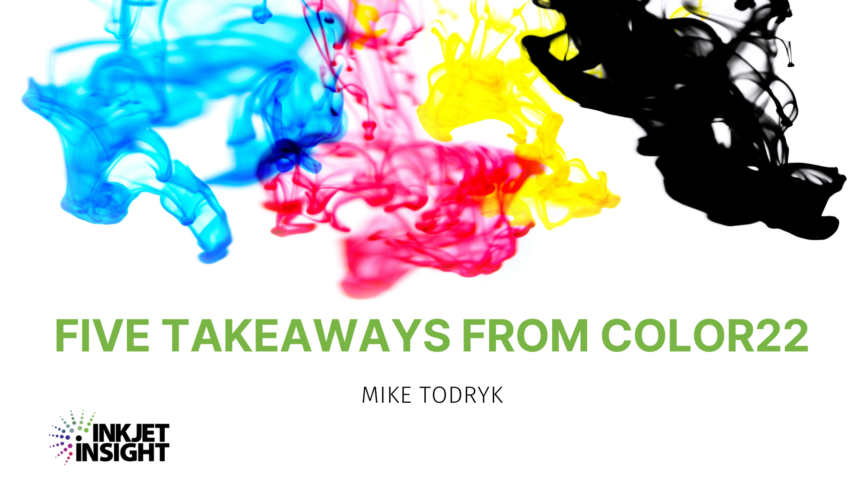The Color22 Conference is in the rear view mirror now, but I am still excited about the experience. I have been attending since 2009 and even though I have transitioned from sitting in the sessions to leading some of them, I never fail to learn new things every time. In my last article, I gave a general overview of the conference. This time, I would like to go into more depth, so here, in no particular order, are five takeaways from Color22.
1. Color Changes the Way You Smell
In the keynote, “Choose Your Winning Color,” Dr. Terry Wu gave a fascinating presentation on how color can affect the other senses, including smell. A test was done in which four wine experts were brought into a lab to smell two glasses of wine and describe them; a red wine and a white wine. In describing the red wine, words like “Cherry, Cedar, Tobacco” were used. For the white wine, words like “Honey, Lemon, Apricot” were used. The test was redone a week later with the same group with the exact same results. The difference in week two, however, was that the two wines were both the exact same white wine, one glass with some red food color in it. The presence of the red food color changed the wine experts’ perception of the wine. I have a similar story on how color changes taste from an old “Galloping Gourmet” cookbook. Message me and I will share it with you. The color of a prescription drug can also enhance its effectiveness. Very cool stuff.
2. Sublimation Hack on How to Measure the Temperature on a Rotary Drum Transfer Machine
Mike Motter of Sublimation Color Management gave several “Mike’s Hacks” throughout his presentation, “Taming the Sublimation Lion Via Color Management.” One that I was not aware of when I was in the dye sub business was getting an accurate heat reading with a heat gun on a rotary transfer machine. The temperature reading can move around a lot. His simple, yet effective, hack (which he demonstrated live) was to paint an area of the drum with black BBQ spray paint. The normally shiny surface will give you a false reading, while the painted area will be accurate.
3. Soft Proofing Has Come a Long Way
I have not looked at any soft proofing solutions in quite some time. At the ICScolor booth, they had a solution that is the closest that I have seen to a proof hanging in a light booth. The way that the monitor was set up, the “proof” in the back of the booth looked like it was printed on paper. You can then hold your press piece up to it in the light booth to compare. For a company like IWCO Direct, with 60,000 page segments with dozens of versions, this could be a great way to check multiple versions without having to print multiple hard proofs.
4. Average Lifespan of a Direct Mail Piece vs. an Email
I won a bottle of wine during, “It’s in the Mail: Your Brand Color” by Saundra Toy. This session was right in my wheelhouse at IWCO Direct and was chock full of great information. One statistic that really stood out for me was the average lifespan of a piece of direct mail vs. an email. The average lifespan of mail: 17 days. The average lifespan of email: 2 seconds. Another interesting statistic is that: “only 44% of people could recall a brand directly after seeing a digital ad, whereas 75% could recall a brand directly after receiving direct mail.” This is very encouraging data for the direct mail space and for the printing industry as a whole.
5. Ways to Double Check Inkjet Uniformity
Mark Bohan and Wilson Howe of Konica Minolta had great information for the amateur color sleuth in their presentation, “How to Become a Color Sleuth.” They were actually taking measurements live during the presentation and analyzing the data in real time. One section had them scan in a target that “passed” and then another one from a few sheets later that “failed”. How could that be? They then showed a solid patch of 50-40-40 CMY where the Cyan had dropped out on one side of the sheet, but not the other. One target had printed on each side. It was not plainly visible just looking at the targets. This gave us an idea of incorporating the large block of 50-40-40 into our test files before we profile to check uniformity.
Each of the sessions I attended was loaded with great information. There were new things to learn everywhere. Anyone who spends their time immersed in color should consider attending Color23. I hope to see you there!

